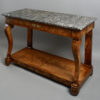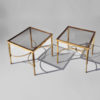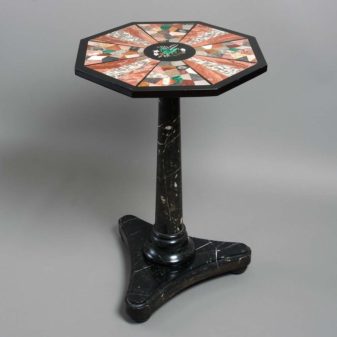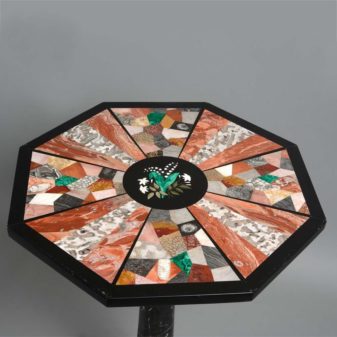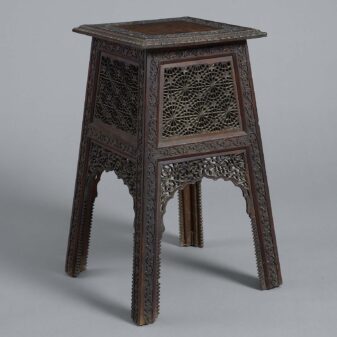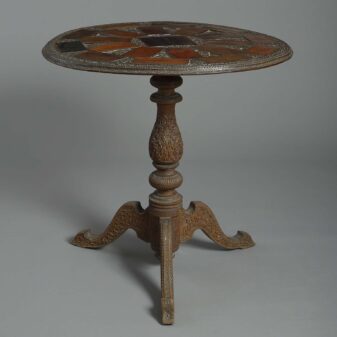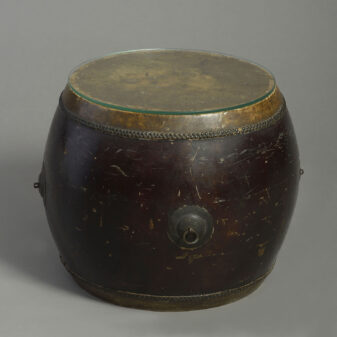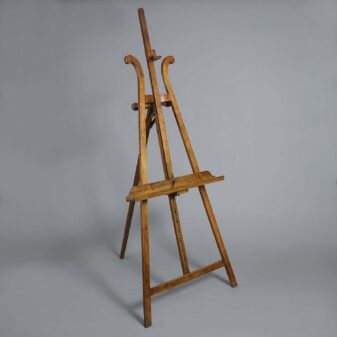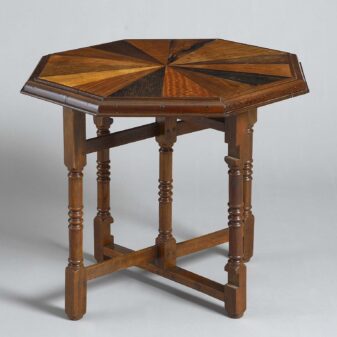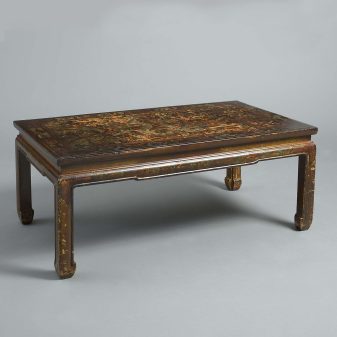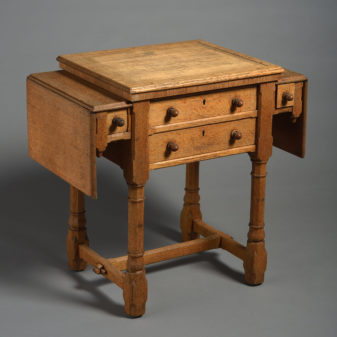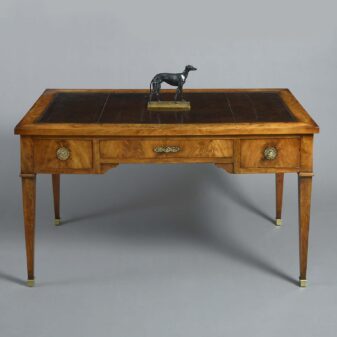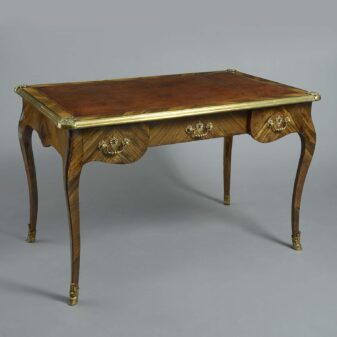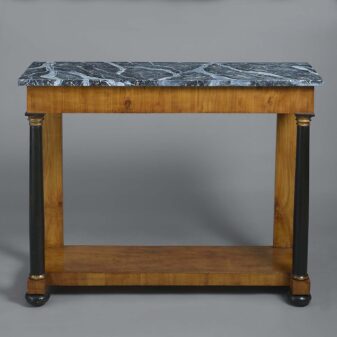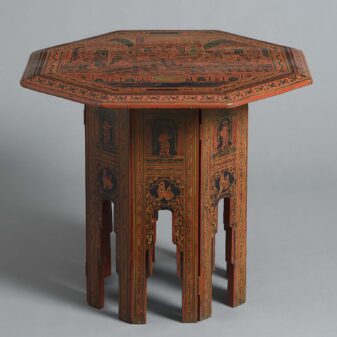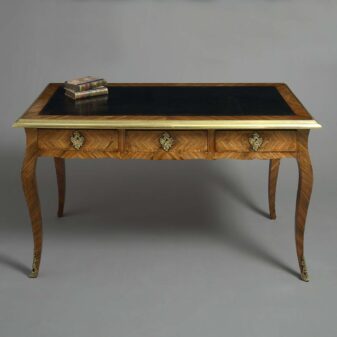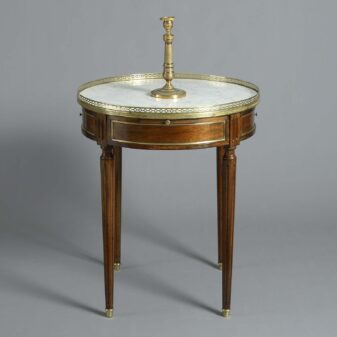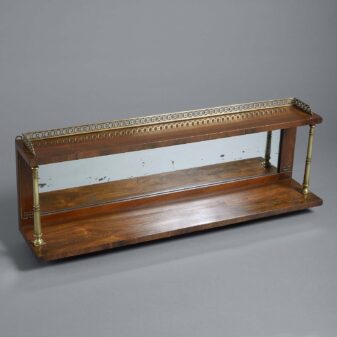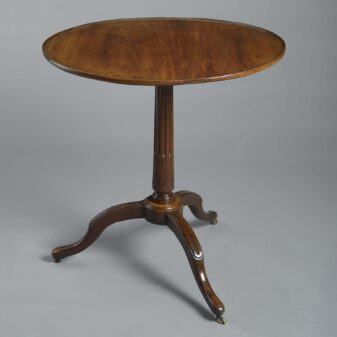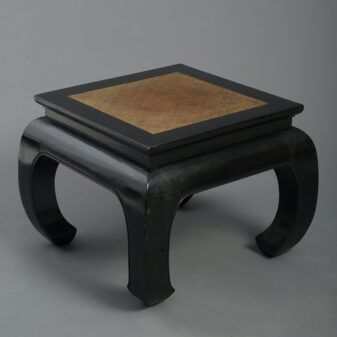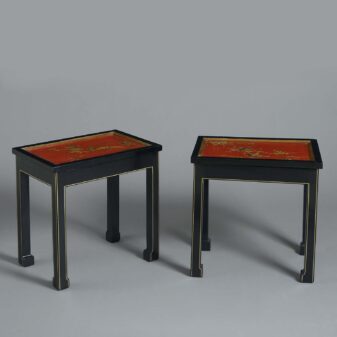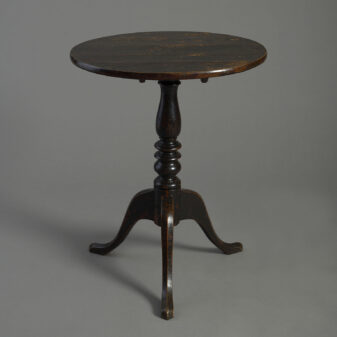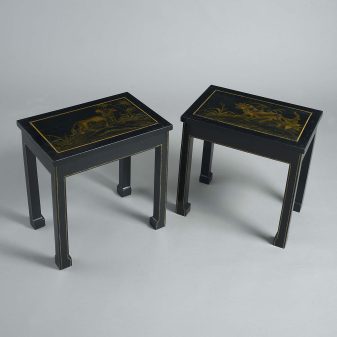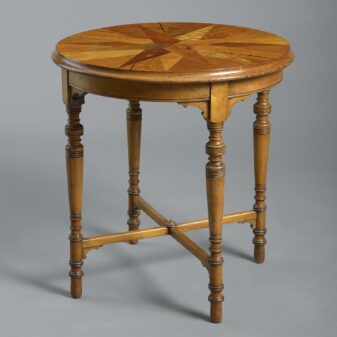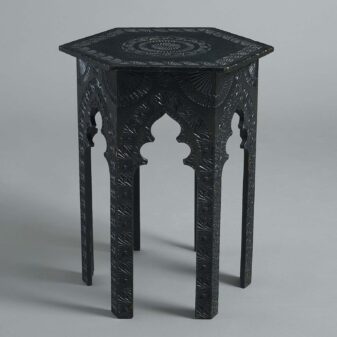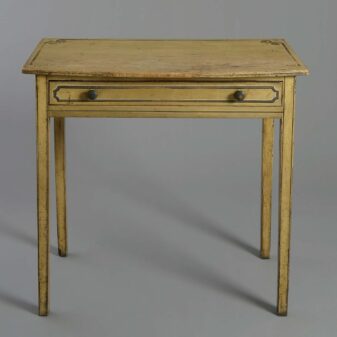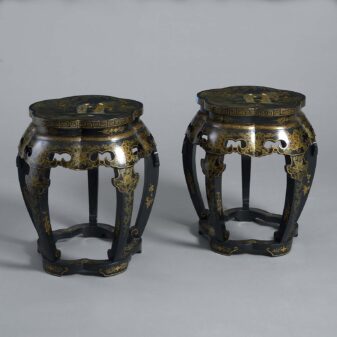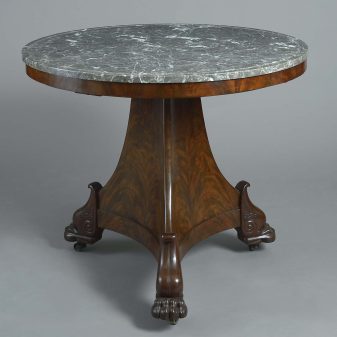A Pietra Dura Derbyshire Table
£5,900
SOLD
A Pietra Dura Derbyshire table, the octagonal top inlaid with specimen marbles and stones in a segmental configuration around a central circular floral plaque and raised on a turned tapering column terminating in a concave triform plinth with bun feet.
Pietra Dura is a process used in the manufacturing of inlaid marble table tops, decorative vases and boxes. It is a technique in which highly intricate decoration is composed by small precious hard stones. Its main traces are in ancient Italian art: the name Pietra Dura means “hard stones”. The process employs a highly delicate technique to integrate small coloured stones such as agates, alabaster, amethyst, jade, lapis lazuli, malachite and topazto, to form intricate sculptures.
DERBYSHIRE MARBLE
Derbyshire black marble items with delicate inlaid scenes and objects of this type are rare and early, and often appear described incorrectly as Italian pietra dura. Italian pietra dura is inlaid in actual marble, which is very different from Ashford Black Marble – a polished limestone that starts out a bluish-grey colour and is unique to Derbyshire. Continental black marble has a harder shine and a more intense black ground, whereas the Derbyshire version has a softer sheen, even when highly polished.
According to William Adams’ ‘Gem of the Peak’, first published in 1838, Ashford Black Marble was first worked into ornaments by the important Derby spar manufacturers Brown & Mawe of King Street. This firm was a late partnership between spar turner Richard Brown (1736-1816) and geological pioneer John Mawe (1766-1829), at the important purpose-built works at the corner of St Helens Street – recently demolished.
Adam claimed Brown and Mawe began using Ashford Black Marble around 1804 to make obelisks, vases, chimneypieces and especially tables, the latter based on drawings by the celebrated John Flaxman who contributed to the design of Josiah Wegwoods basalt wares. The stone was in demand especially for the embellishment of chimneypieces in grander Elizabethan houses – Hardwick Hall being an excellent example.
From the outset, inlays were added for embellishment, described by Adam as ‘mosaic work’. This began with simple geometrical shapes such as lozenges and rectangles, especially chess boards for table tops; but later, Mawe, who set up on his own at Matlock Bath in 1812, began inlaying specimen Derbyshire polished limestones, also intermixing them with chips of European marbles, imported especially for the purpose – as with this example. Later Mawe, who also had a showroom in Cheltenham, began to make what he termed ‘Florence Work’, in close imitation of Italian pietra dura decoration.
The present table is a classic example of Florence Work (specifically for the charming central cartouche of floral sprigs) with radiating panels of specimen marbles set about it. The technique originally consisted of shaping coloured stones, and then adding them to decorative objects and sculptures made out of marble, wood or bone. During the Renaissance this art was resurrected by Italian craftsmen and the first hard-stone workshop was established by the Medici family in Florence in 1588.
The county of Derbyshire in England has a rich mining history and this table is a good example of Pietra Dura work from this region.

